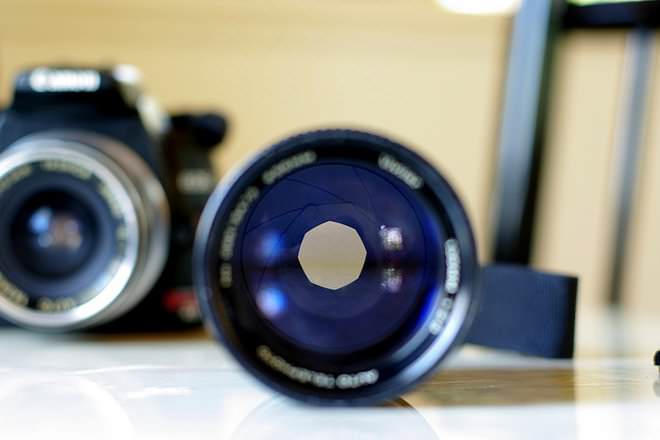
Lenses are typically specified with their maximum aperture ability. Aperture is calibrated in f/stops, written in numbers like 1.4, 2, 2.8, 4, 5.6, 8, 11 and 16.
Aperture Camera Definition. A large aperture admits more light and a small aperture admits less light to the shutter and image sensor. Aperture is the adjustable opening in a camera lens that lets light through to the image sensor, much like the human iris.
 Photography Research Just another SB You Web Publishing From you.stonybrook.edu
Photography Research Just another SB You Web Publishing From you.stonybrook.edu
Aperture sizes range from the widest (f/1.4) to the smallest range (f/32). The limiting diameter which determines the amount of light which reaches the imaging area is called the aperture stop, typified by the adjustable diaphragm near the front of a compound camera lens. Although some cameras may not display the “/” symbol or use a capital “f” instead, it still means the same thing.
Photography Research Just another SB You Web Publishing
Between them are additional “stops” of f/2, f/2.8, f/4, f/5.6, f/8, f/11, f/16, and f/22. It’s written as the f/2.8, f/4, and so on in the screen/ viewfinder. It is calibrated in f/stops and is generally written as numbers such as 1.4, 2, 2.8, 4, 5.6, 8, 11 and 16. Hole entered the cave through a narrow aperture.
 Source: bringitonline.in
Source: bringitonline.in
An f‑number (ƒ/#) or f‑stop refers to the ratio of a lens’s focal length to its aperture’s diameter and indicates the amount of light coming through the lens. Aperture refers to the opening of a lens�s diaphragm through which light passes. Aperture is calibrated in f/stops, written in numbers like 1.4, 2, 2.8, 4, 5.6, 8, 11 and 16. Aperture.
 Source: you.stonybrook.edu
Source: you.stonybrook.edu
Aperture is measured in stops indicated with f numbers. Aperture is defined by the size of the opening through which light can enter the camera. When you hit the shutter release button to take the picture, the camera aperture opens to the predetermined width, letting a specific amount of light through. Between them are additional “stops” of f/2, f/2.8, f/4,.
 Source: davodlbn.com
Source: davodlbn.com
A smaller hole allows less light to hit the sensor, darkening your photos. A larger hole allows more light to hit the sensor, lightening your photos. An f‑number (ƒ/#) or f‑stop refers to the ratio of a lens’s focal length to its aperture’s diameter and indicates the amount of light coming through the lens. A usually adjustable opening in an.
 Source: thephoblographer.com
Source: thephoblographer.com
A small aperture lets in less light and leads to a darker image, while a larger one can flood the sensors with light. Hole entered the cave through a narrow aperture. Aperture can be defined as the opening in a lens through which light passes to enter the camera. See definition of aperture above. Aperture in photography is the section.
 Source: photographylife.com
Source: photographylife.com
A larger hole allows more light to hit the sensor, lightening your photos. A small aperture lets in less light and leads to a darker image, while a larger one can flood the sensors with light. The limiting diameter which determines the amount of light which reaches the imaging area is called the aperture stop, typified by the adjustable diaphragm.
 Source: diffen.com
Source: diffen.com
Lower f/stops give more exposure because they represent the larger apertures, while the higher f/stops give less exposure because they represent smaller apertures. When you hit the shutter release button to take the picture, the camera aperture opens to the predetermined width, letting a specific amount of light through. A space through which light passes in an optical or photographic.
 Source: freebigpictures.com
Source: freebigpictures.com
In av mode, you set the aperture and your camera selects an appropriate shutter speed to correctly expose your shot — allowing you much more creative freedom, and ultimately, more fun. Lenses are typically specified with their maximum aperture ability. The limiting diameter which controls the size object which can be. And by adjusting the aperture setting on your camera,.
 Source: photographylife.com
Source: photographylife.com
It’s written as the f/2.8, f/4, and so on in the screen/ viewfinder. Aperture is calibrated in f/stops, written in numbers like 1.4, 2, 2.8, 4, 5.6, 8, 11 and 16. Aperture sizes range from the widest (f/1.4) to the smallest range (f/32). Aperture is the adjustable opening in a camera lens that lets light through to the image sensor,.
 Source: runic.com
Source: runic.com
Lower f/stops give more exposure because they represent the larger apertures, while the higher f/stops give less exposure because they represent smaller apertures. Aperture in photography is the section of the camera that can be adjusted to let in more or less light. A large aperture admits more light and a small aperture admits less light to the shutter and.





